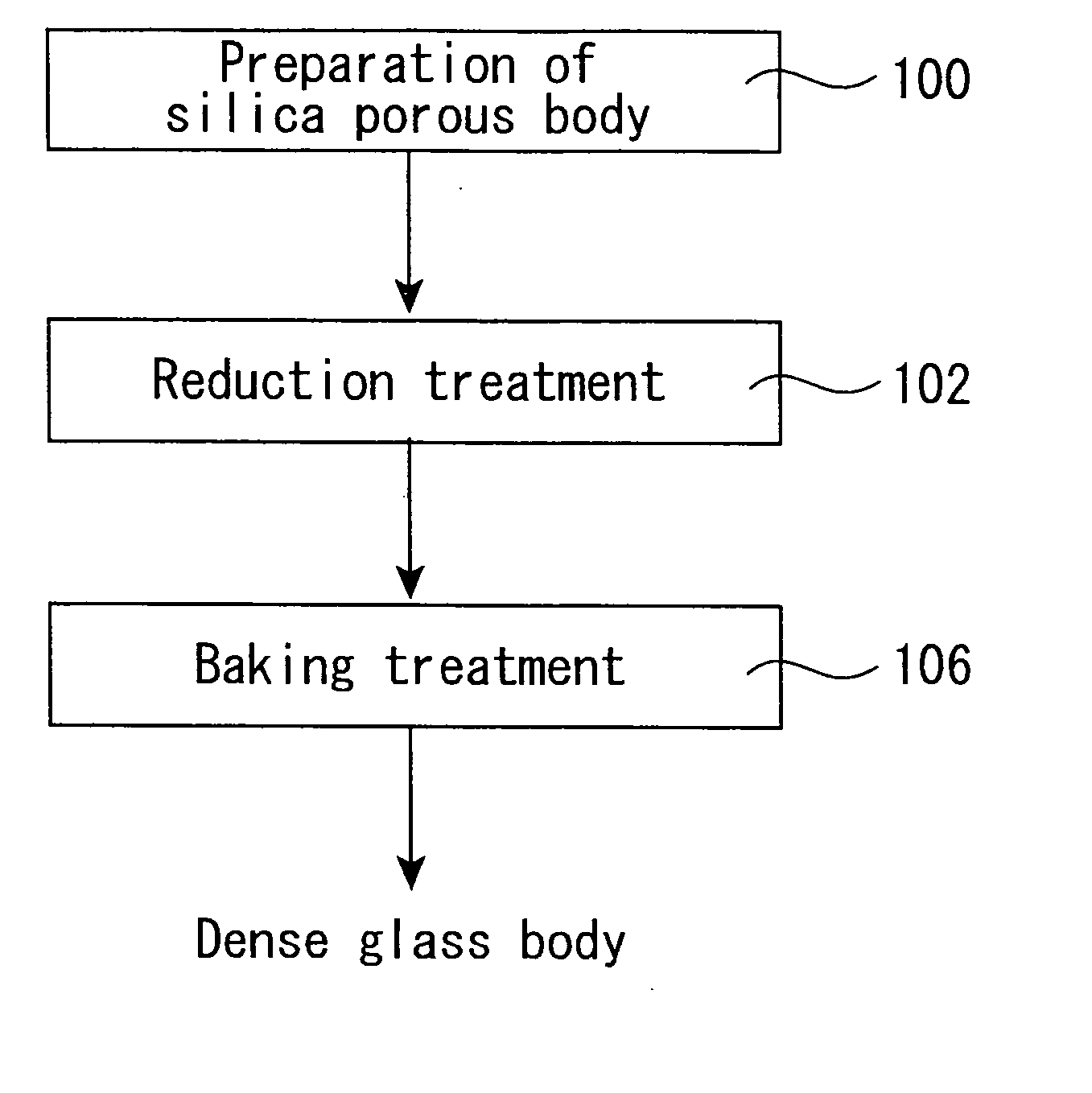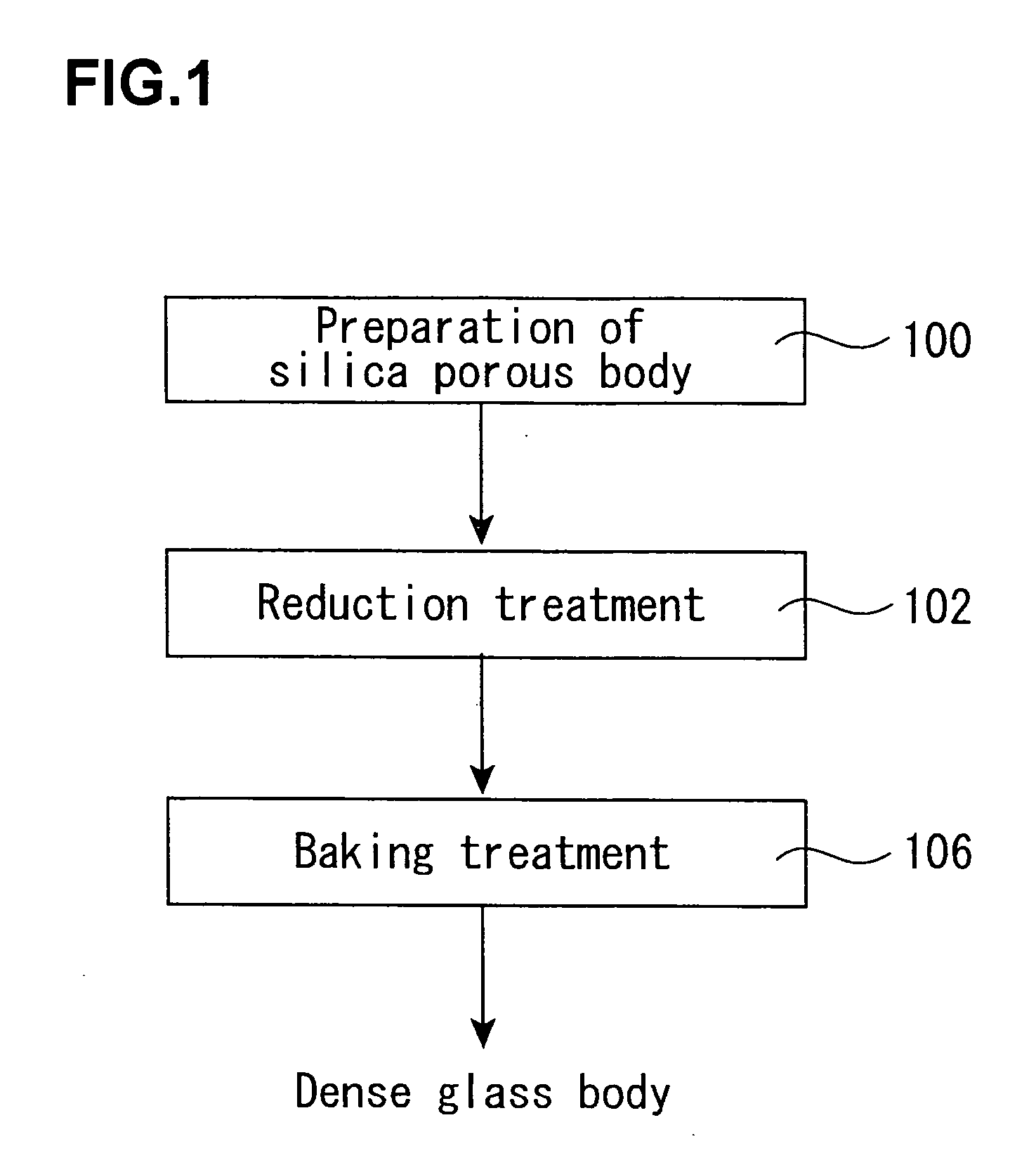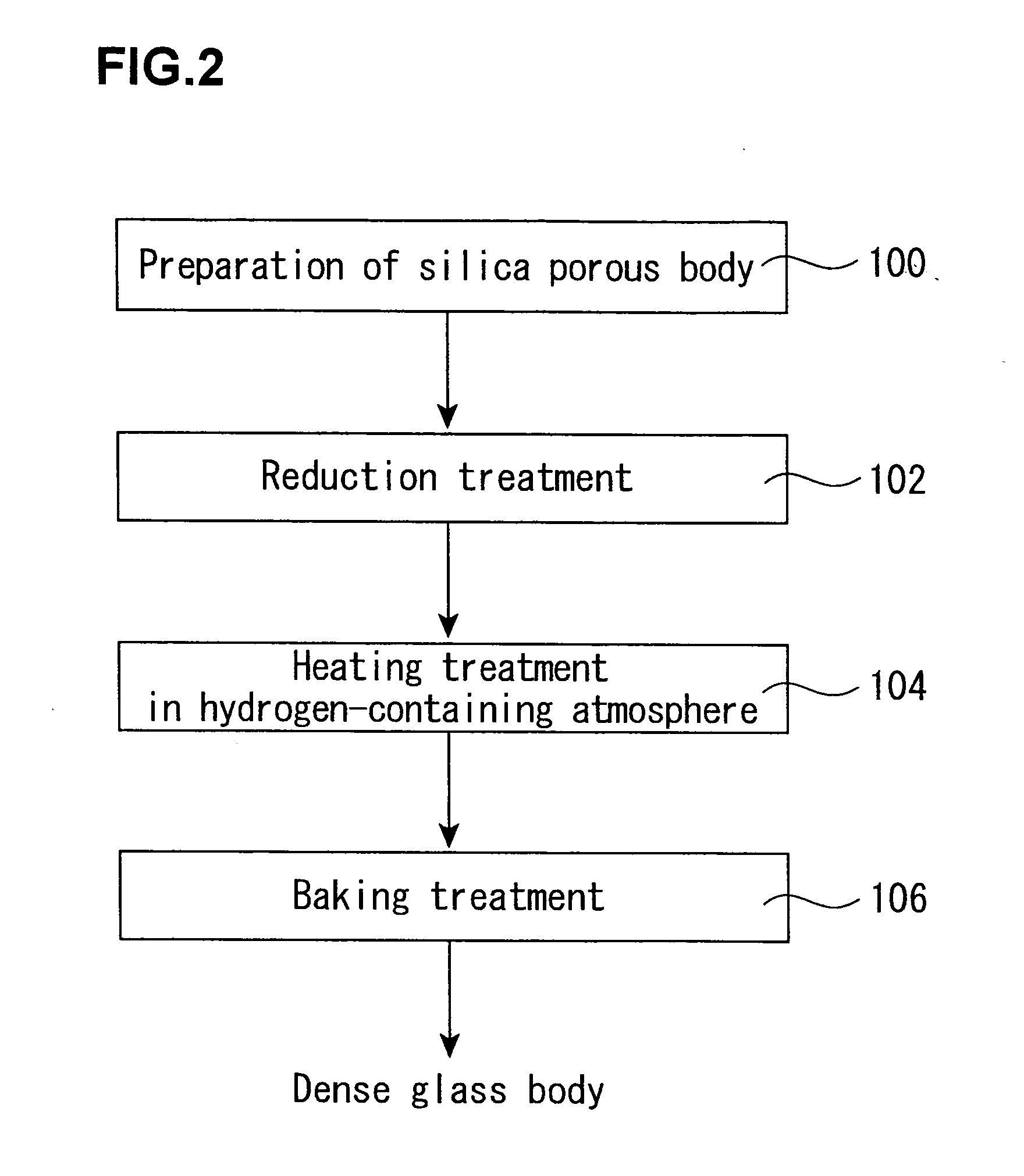Method for producing synthetic quartz glass and synthetic quartz glass article
a technology of synthetic quartz glass and synthetic quartz, which is applied in the field of production process of synthetic quartz glass, can solve the problems of large chlorine residue in the porous body, and achieve the effect of preventing the diffusion of alkali metals and high
- Summary
- Abstract
- Description
- Claims
- Application Information
AI Technical Summary
Benefits of technology
Problems solved by technology
Method used
Image
Examples
example 1-1
[0129] About 1 kg of a porous synthetic quartz glass body (OH group content: about 300 ppm) in a column form having a diameter of 100 mm as obtained by flame hydrolysis of tetrachlorosilane was set in a quartz glass-made furnace core tube (diameter: 200 mm) installed in an electric furnace. Next, the inside of the furnace core tube was evacuated, heated at 500° C., and preheated at that temperature for 60 minutes.
[0130] Thereafter, the temperature was raised to the reaction temperature, and a hexamethyldisilazane vapor was fed as a reaction gas while diluting with an N2 gas, thereby reacting with the OH group in the porous synthetic quartz glass body. The heating was carried out at the reaction temperature shown in Table 1 while keeping that temperature for a reaction time as expressed therein. Incidentally, the supplying rate shown in the following table is shown in terms of a flow rate of the N2 gas containing the reaction gas.
[0131] After completion of the reaction, the treated...
examples 1-2 to 1-6
[0132] An experiment was carried out in the same manner as in Example 1-1, except for changing the reaction between a porous body and a reaction gas as shown in Table 1, thereby obtaining densified synthetic quartz glasses.
Experimental Examples 1-1 to 1-4
[0133] As Experimental Example 1-1, a dehydration reaction was carried out using a conventional chlorine gas as the reaction gas. In Experimental Example 1-2, a dehydration reaction was carried out at a high temperature and at a high concentration using hexamethyldisilazane. Experimental Example 1-3 is one in which baking of the porous synthetic quartz glass body was carried out in a nitrogen atmosphere. Other treatment conditions are the same as in Experimental Example 1-1 and shown in Table 1. Incidentally, Experimental Example 1-4 is one in which a natural quartz crystal was converted into a quartz glass upon melting by an oxyhydrogen flame.
[0134] The OH group and chlorine remaining in the foregoing synthetic quartz glasses ob...
examples 2-1 to 2-4
[0137] An experiment was carried out in the same manner as in Example 1-1, except for changing the reaction between a porous body and a reaction gas as shown in Table 3, thereby obtaining densified synthetic quartz glasses.
TABLE 3Reactiontemper-SupplyingReactionatureratetimeReaction gas(° C.)(mol / hr)(hrs)Example 2-1Hexamethyldisilazane3001.03Example 2-2Hexamethyldisilazane5001.13Example 2-3Hexamethyldisilazane7000.93Example 2-4Hexamethyldisilazane10001.13ExperimentalChlorine7001.03Example 2-1ExperimentalTrichloromethylsilane5001.03Example 2-2ExperimentalNitrogen5001.03Example 2-3
Experimental Examples 2-1 to 2-3
[0138] As Experimental Example 2-1, a dehydration reaction was carried out using a conventional chlorine gas as the reaction gas. As Experimental Example 2-2, a dehydration reaction was carried out using trichloromethylsilane as the reaction gas. Experimental Example 2-3 is one in which baking of the porous body was carried out in an N2 atmosphere without using the reaction...
PUM
| Property | Measurement | Unit |
|---|---|---|
| Temperature | aaaaa | aaaaa |
| Temperature | aaaaa | aaaaa |
| Temperature | aaaaa | aaaaa |
Abstract
Description
Claims
Application Information
 Login to View More
Login to View More - R&D
- Intellectual Property
- Life Sciences
- Materials
- Tech Scout
- Unparalleled Data Quality
- Higher Quality Content
- 60% Fewer Hallucinations
Browse by: Latest US Patents, China's latest patents, Technical Efficacy Thesaurus, Application Domain, Technology Topic, Popular Technical Reports.
© 2025 PatSnap. All rights reserved.Legal|Privacy policy|Modern Slavery Act Transparency Statement|Sitemap|About US| Contact US: help@patsnap.com



